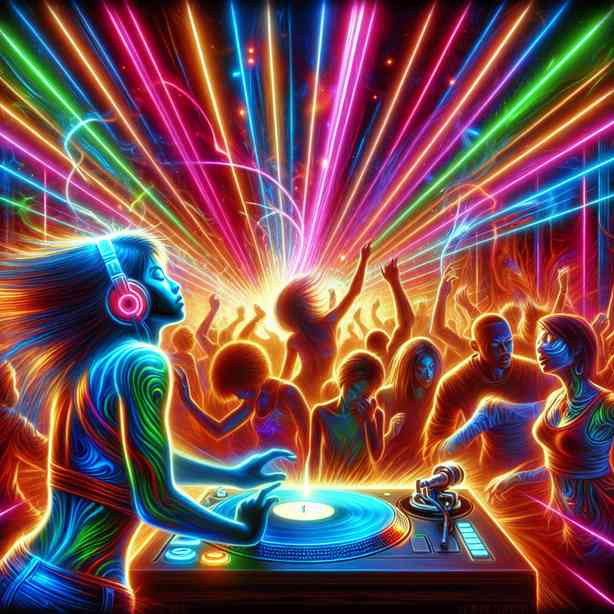
In the world of music, there’s a moment that stands out, a moment that captures the attention of every listener – it’s that moment when the bass drops. For many, this moment is not just a mere shift in sound; it represents an emotional transformation, a collective euphoria that can change the atmosphere of any event, be it a concert, a club, or a simple gathering among friends. The deep, resonating vibrations that accompany a bass drop have a unique power to transcend mere auditory experience, evoking feelings of excitement and connection among those who share the experience.
Understanding the significance of the bass drop requires us to delve into the mechanics of sound itself. When we listen to music, we are experiencing sound waves that travel through the air, creating vibrations that our ears interpret as different pitches and rhythms. Bass frequencies, which generally range from 20 Hz to 250 Hz, are felt as much as they are heard. This low-end sound has a way of shaking us physically, resonating with our very core, and creating a primal reaction in our bodies. When the bass drops, it isn’t just a change in the music; it’s an invitation to let go, to immerse ourselves completely in the rhythm.
The anticipation that builds before the bass drop is another crucial element that enhances the effect. Often, there is a gradual build-up — a gentle crescendo, a melody that piques our curiosity, or even a silence that hangs in the air, heightening our expectations. As listeners, we find ourselves on the brink of something exhilarating, which prepares us mentally and emotionally for the impending sonic explosion. This build-up fosters a sense of community, as we glance at one another, sharing a moment of collective anticipation that amplifies the forthcoming impact of the drop.
When the bass finally hits, it is as if a switch has been flipped. The energy of the room transforms instantly; people respond in unison, letting loose and moving to the rhythm in a way that feels almost primal. This moment has the ability to obliterate any barriers between individuals, creating a collective experience of joy and liberation. Whether it’s in a packed nightclub or a festival stage, that synchronization of movement, laughter, and cheer brings people together, reminding us of our shared humanity.
Musicians and producers have long understood the importance of this moment, often crafting their tracks with the bass drop in mind. It’s not merely about having a heavy bassline; it’s about execution and timing. Some tracks may follow a traditional build-up, but others are innovative, introducing unexpected elements right before the drop, playing with listeners’ emotions and keeping them on the edge of their seats. This careful construction allows artists to manipulate our reactions, enhancing the thrill of the drop and making it more memorable.
Moreover, the bass drop is not confined to a singular genre of music. From electronic dance music (EDM) to hip-hop, from pop to rock, the bass drop’s influence spans many musical styles, each embracing it in its own unique way. EDM, for example, thrives on these moments, often crafting songs specifically designed to induce euphoria at the drop. Hip-hop may incorporate the drop into beats, using layered sounds that create a heavier impact. Each genre interprets the bass drop in a manner that aligns with its identity, yet they all share the common point of igniting excitement and connection among audiences.
The significance of the bass drop transcends just the music; it plays a pivotal role in the culture surrounding it. Festivals and concerts are often built around these moments, with fans eagerly logging into platforms to purchase tickets and secure their spot amidst the energy of a live performance. This anticipation drives the music industry, creating a cycle of innovation as artists push boundaries to create that unforgettable moment. As live events resume, the experience of the bass drop has become even more cherished, symbolizing resilience and the return to joy post-pandemic.
Psychologically, the bass drop can also tap into the power of music as a tool for emotional expression. During moments of hardship or stress, music serves as a refuge, allowing listeners to escape their realities, if only for a moment. The bass drop, blasting through our speakers, can release pent-up energy, serving as a cathartic release. It lets us connect with our emotions, whether that’s pure joy, exhilaration, or even a sense of relief. In this sense, the bass drop becomes not just a musical element, but a therapeutic experience for many individuals.
Social media has further enhanced the experience of the bass drop, allowing people to share their moments of joy in real-time. Clips of epic drops shared on platforms like Instagram or TikTok often go viral, creating communities around those specific songs and moments. These platforms enable fans to connect with one another, even across geographical boundaries, driven by a shared love of the music and the euphoric highs it brings. The sense of community fostered through shared experiences on social media exemplifies how the bass drop can unify people, even if they are thousands of miles apart.
In conclusion, the moment the bass drops goes far beyond a simple transition in music. It encapsulates a profound experience that combines the power of sound with the depth of human emotion. From the anticipatory build-up to the euphoric release, the bass drop serves as a pivotal moment in musical performances, connecting us with each other and with the music in a unique way. It echoes the notion that music, especially when intertwined with powerful elements like a bass drop, can unite us, uplift our spirits, and allow for a moment of pure, unadulterated joy. As we look to the future of music and live performances, one thing is certain: the power of the bass drop will continue to resonate, bringing people together in its everlasting embrace.


